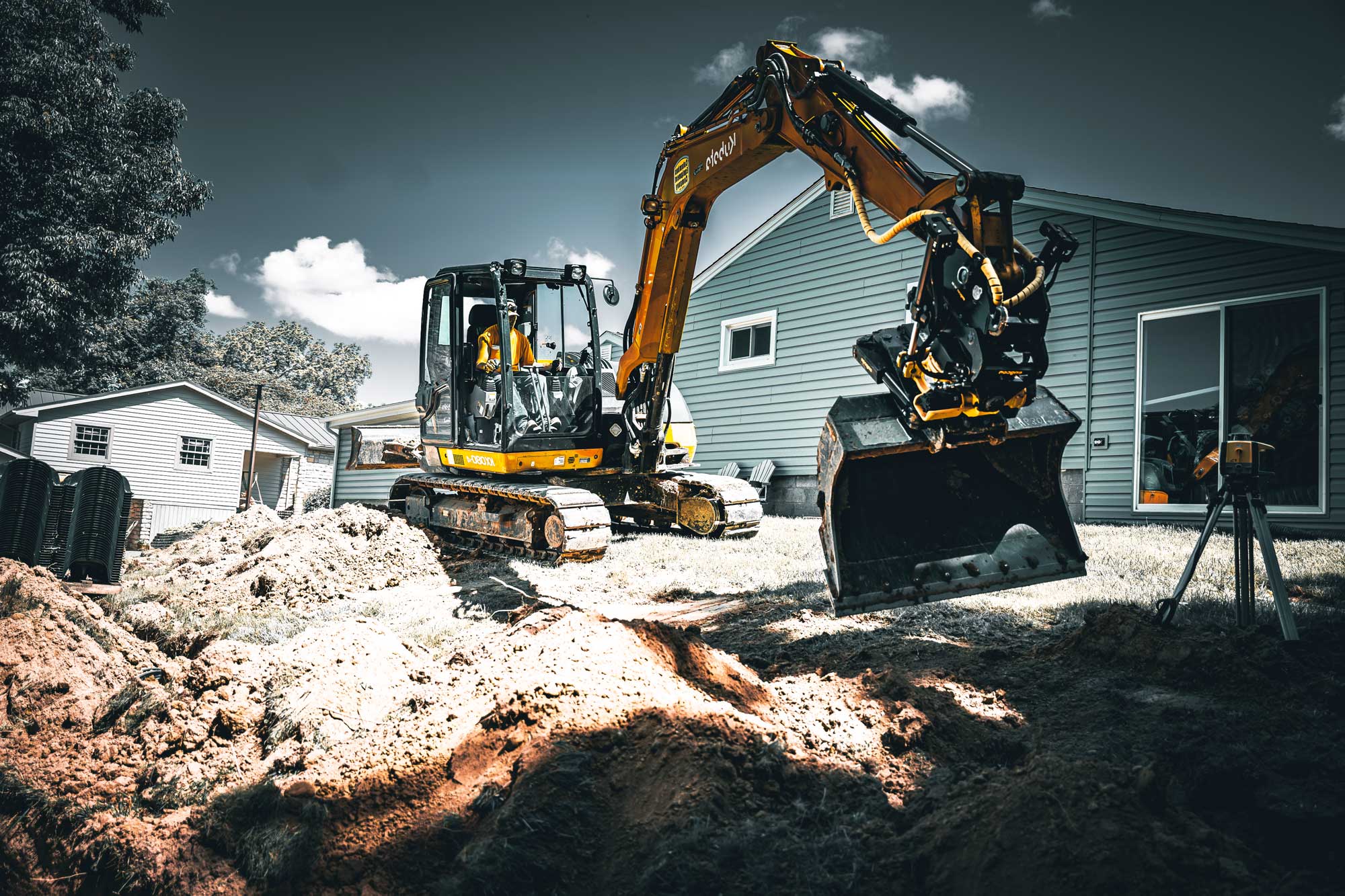Septic Ohio - Comprehensive Septic Tank Services in Ohio
Septic Ohio - Comprehensive Septic Tank Services in Ohio
Blog Article
In-Depth Expedition: The Scientific Research Behind Superior Excavation Practices
From ancient hand tools to modern-day hydraulic excavators, the advancement of excavation methods has actually been a testimony to human ingenuity and technological innovations. What really sets superior excavation methods apart is a deep understanding of geological principles, coupled with the usage of cutting-edge tools and methods.
Evolution of Excavation Methods
Throughout history, the development of excavation techniques has played a critical duty beforehand construction practices and archaeological discoveries. From the simple devices utilized by our ancestors to the innovative equipment utilized in modern times, the progression of excavation techniques has actually substantially changed just how we approach various projects.
In old times, manual work with basic devices such as wheelbarrows, shovels, and pickaxes was the primary technique of excavation. This labor-intensive procedure restricted the deepness and scope of excavations, often resulting in slow progress and restricted access to certain sites. As human beings progressed, so did the methods and devices utilized for excavation.
The Industrial Transformation marked a turning point in excavation exercise with the intro of steam-powered equipment. This technology changed the field, permitting faster and a lot more extensive excavations. In contemporary times, modern technology plays a crucial function in excavation, with innovations like general practitioner systems, drones, and 3D scanning enhancing accuracy and performance in the area. The evolution of excavation techniques continues to shape the method we develop, discover, and understand the globe around us.
Role of Technology in Excavation

The combination of cutting-edge innovation has essentially revolutionized the area of excavation, improving precision and efficiency to unmatched levels. Among the crucial technological improvements that has dramatically impacted excavation techniques is the utilization of general practitioner systems. These systems permit accurate mapping of excavation sites, making it possible for drivers to properly locate underground utilities and frameworks. In addition, using telematics in excavation equipment has enabled real-time tracking of device performance, leading to positive upkeep and increased functional productivity.
Moreover, the arrival of 3D modeling and simulation software program has structured the planning process for excavation tasks. Engineers and drivers can currently imagine the entire excavation procedure prior to breaking ground, recognizing prospective obstacles and maximizing workflow. In combination with this, the application of drones in excavation activities has actually assisted in airborne studies, volumetric measurements, and site inspections with unmatched speed and accuracy.
Geological Principles in Excavation
An understanding of geological concepts is necessary for guaranteeing the structural stability and security of excavation sites. Geological elements play an essential function in establishing the feasibility and security of excavation projects (excavating ohio). One key geological concept to take into consideration is the kind of soil or rock existing at the website. Different soil kinds, such as sand, clay, or gravel, have varying levels of security and need various excavation strategies. Cohesive soils like clay might call for additional support to protect against collapses, while sandy soils may be susceptible to erosion throughout excavation.
By conducting complete geological surveys and evaluation, excavators and designers can develop techniques to reduce risks and ensure the effective conclusion of excavation tasks. Inevitably, integrating geological concepts right into excavation techniques is critical for accomplishing risk-free, efficient, and sustainable outcomes.

Most Current Devices for Excavation
In the world of excavation techniques, contemporary advancements in tools have changed the efficiency and precision of excavation procedures. One of the current devices making waves in the sector is making use of drones equipped with innovative imaging innovation. These drones can supply detailed airborne surveys of excavation websites, offering real-time data on topography and possible risks. This information aids in far better planning and decision-making during the excavation procedure.
An additional cutting-edge tool getting popularity is the implementation of 3D printing innovation for producing custom excavation devices. This permits the production of web specialized devices that are customized to the details demands of a project, raising performance and lowering downtime.
Moreover, innovations in products science have actually brought about the development of more powerful and much more sturdy excavation devices. septic ohio. Tungsten carbide-tipped excavator accessories, as an example, deal remarkable efficiency in tough ground conditions, improving efficiency on-site
Science's Influence on Excavation Practices

In addition, scientific research study on soil auto mechanics and geotechnical design has supplied important insights into dirt actions, permitting excavation specialists to make enlightened decisions concerning excavation techniques and dirt stablizing strategies. On the whole, science continues to drive development and renovation in excavation practices, making excavation tasks much more reliable, economical, and lasting.

Conclusion
In final thought, the development of excavation techniques has actually been greatly influenced by developments in technology and a much deeper understanding of geological principles. The most up to date tools and equipment made use of in excavation have actually improved effectiveness and precision in the field. The application of scientific understanding has significantly boosted excavation practices, causing a lot more effective and lasting techniques for digging deep into numerous sorts of materials.
In the realm of excavation techniques, modern technologies in tools have actually transformed the effectiveness and precision of excavation procedures. By leveraging clinical principles, the excavation market has been able to substantially improve effectiveness, precision, and security in excavation procedures. GPR enables excavation groups to non-invasively check and map subsurface frameworks, energies, and potential dangers, enabling them to plan excavation projects with greater accuracy and lowered threat of mishaps.
Additionally, scientific study on dirt mechanics and geotechnical design has you can look here given useful understandings into soil habits, permitting excavation professionals to make informed decisions concerning excavation techniques and soil stablizing strategies. Overall, scientific research proceeds to drive innovation and enhancement in excavation techniques, making excavation jobs extra efficient, cost-effective, and lasting.
Report this page